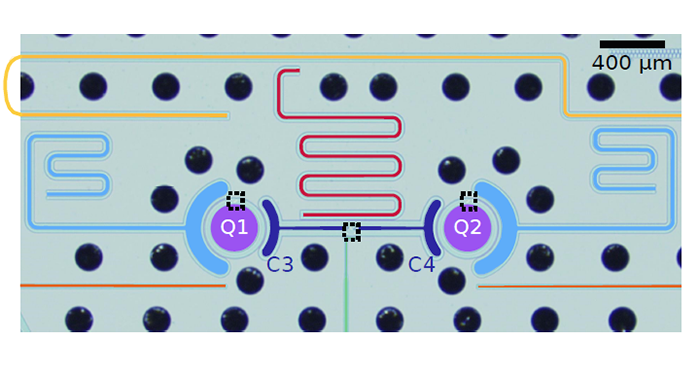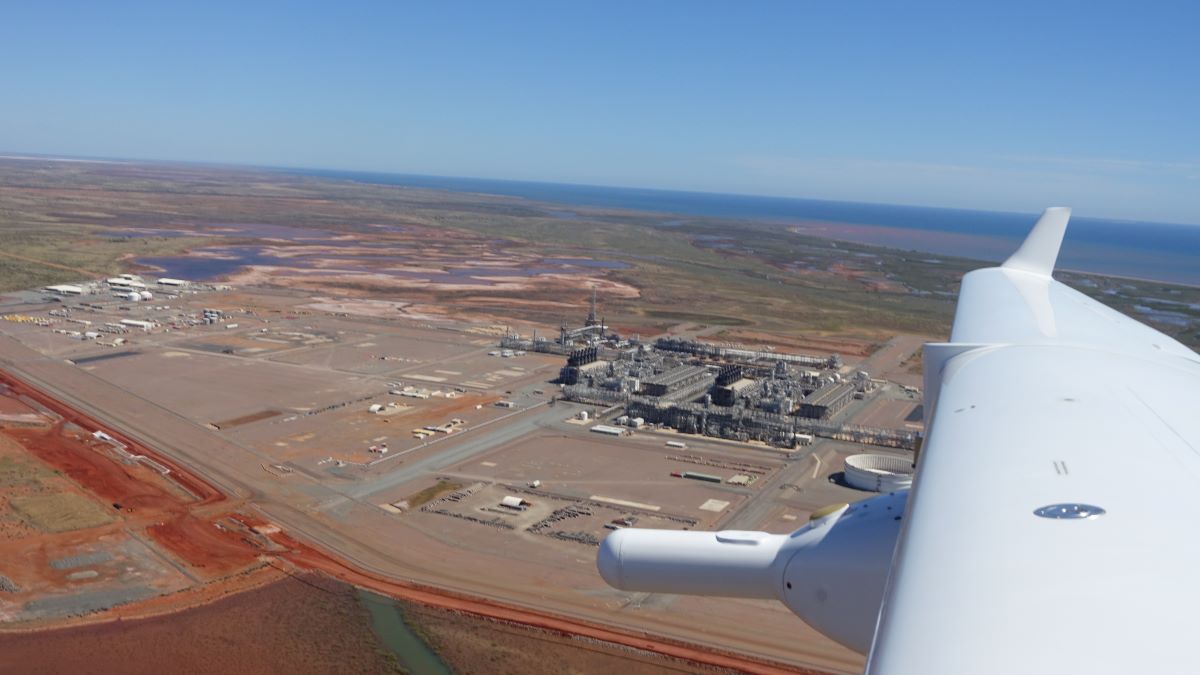As we look to the sky above and ponder one of the biggest questions of our time—how to combat the carbon emissions that are driving climate change—a potential answer just may lie beneath our feet, in Earth’s deep subsurface.
Pacific Northwest National Laboratory (PNNL) scientists have developed a process that transforms carbon dioxide (CO2) into solid rock. It mimics Earth’s natural processes, but at a much faster pace—from thousands of years to mere months. But storing CO2 in solid minerals, a process called carbon mineralization, at a scale large enough to make an impact, takes more than just the discovery alone.
“We need ways to measure, verify, and communicate that the CO2 we put in the ground is mineralized and won’t escape,” said PNNL Chief Chemist Todd Schaef, who pioneered carbon mineralization in basalts.
Madeline Bartels, an intern on Schaef’s team, has helped to do that. Her research, published in the journal Analytical Chemistry, counts carbon mineral molecules at a scale no one has measured before—less than 100 parts per million.
“We can actually see how much carbon we’re locking away in rock,” said Bartels. “Imagine putting a playing card on a football field. That would be equivalent to the scale of what one part per million would be, but instead we’re measuring the amount of carbon minerals in a tiny sample of powdered rock.”
Before, it was as if they were looking at those playing cards on the field from the top row of the bleachers. Now, they’re right on the field with a close-up view.
The United States emits more than 6,300 million metric tons of carbon dioxide a year. Using the PNNL carbon storage technique at the Wallula Basalt Pilot Demonstration site in 2013, researchers injected 977 metric tons of liquid CO2 underground, revisited it after 22 months, and found it had converted into solid mineral.
How do we know CO2 has formed into rock?
Although carbon mineralization can lock away CO2 in large quantities, there has not yet been a commercial-scale project in the United States. A special permit to inject CO2 underground is needed but hasn’t been attained so far because industrial requirements are still being developed and tested.
“The Department of Energy, communities, stakeholders, industry, and national labs are working together to assure we have the best tools in place for sustainable, safe, and secure storage of CO2 via mineralization in basalts and other reactive rocks,” said Quin Miller, co-author of the paper and mentor to Bartels.
If adopted as a standard, the thermogravimetric analysis mass spectrometry (TGA-MS) technique could one day be used by private companies to measure and verify how much CO2 is being locked away.
“It’s really cool that research I was working on as an undergraduate can possibly make a significant contribution to the field as it is emerging,” said Bartels, who has participated in two Department of Energy, Office of Science Workforce Development for Teachers and Scientists SULI internship appointments while earning her bachelor’s degree at Yale University.
TGA-MS was conducted on drill cutting samples recovered from the Wallula well as a test.
“We ground up rock samples into a very fine and powdery form and put a small amount—about the size of a sunflower seed—into a machine that heats up and tracks the weight of the sample,” said Bartels.
At high heat, various reactions occur. Water molecules and CO2 molecules are released from the sample and enter a small tube, connected to a mass spectrometer.
“It can be hard to discern the amount and source of carbon,” said Miller. “We can do a lot of things like shoot X-rays at rocks and try to look at the carbonates that way, but TGA-MS allows us to look at much smaller amounts than what we’ve been able to detect with our X-rays.”
The technique allowed researchers to quantify carbon minerals as they entered the mass spectrometer through the tube. They detected the minerals at a miniscule level of 48 parts per million, the first study known to push TGA-MS quantification down to double digits. Using the measurements, the PNNL team created a calibration curve to link the weight of carbon minerals to their TGA-MS signal, allowing them to quantify the amount of carbon minerals in the sample.
Mentoring the next generation of carbon mineralization experts
As the research field develops, Schaef and Miller are invested in bringing the PNNL discovery of carbon mineralization to the commercial scale and inspiring students and early career researchers to join the quest for carbon management solutions.
“Madeline’s participation in SULI gave her the opportunity to learn hands on, publish a paper as first author, and be featured on a cover. It was great, impactful work,” said Miller. “The more people we have on this team, the more perspectives, ideas, and methods are introduced on how to do things to bring this research to scale.”
Bartels re-joined PNNL this summer as a SULI intern and plans to continue her carbon mineralization and geochemistry research as a graduate student.
“As a national lab, we want to entice the next generation and that is what we are doing here,” said Schaef. “I have been in this field for over 32 years, and I would love to train more people like Madeline to hopefully find solutions to these challenges facing society.”
More information:
Madeline F. Bartels et al, Parts-Per-Million Carbonate Mineral Quantification with Thermogravimetric Analysis–Mass Spectrometry, Analytical Chemistry (2024). DOI: 10.1021/acs.analchem.3c03936
Citation:
Underground CO₂ storage: Researchers measure carbon mineralization at unprecedented small scale (2024, July 25)
retrieved 26 July 2024
from https://phys.org/news/2024-07-underground-co8322-storage-carbon-mineralization.html
This document is subject to copyright. Apart from any fair dealing for the purpose of private study or research, no
part may be reproduced without the written permission. The content is provided for information purposes only.





















Discussion about this post